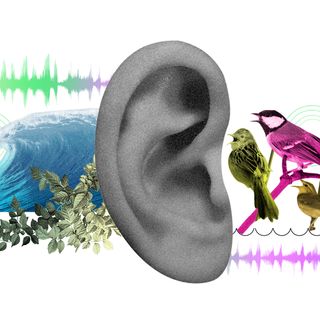Microplastic waste has been found everywhere — from Alpine snow to a woman’s placenta, from sea breeze to our food. No one knows what its effect will be on us, though most researchers suspect the impact will not be good. Now, however, there is evidence of a profoundly negative effect — one scientists say will pose an “imminent risk” to human health. A study of microplastic waste in sewage treatment plants has found the fine plastic particles form a slick called ‘biofilm’ that traps bacteria and helps pathogens develop antibiotic resistance over time.
Microplastics are fine shards of plastic fewer than 5 millimeters long. They come from the fibers of synthetic clothing, cosmetics, and even toothpaste.
“We might think of microplastics as tiny beads, but they provide an enormous surface area for microbes to reside,” study author Mengyan Li, an associate professor of chemistry and environmental science with the New Jersey Institute of Technology (NJIT), U.S., said in a statement. “When these microplastics enter the wastewater treatment plant and mix in with sludge, bacteria like [Novosphingobium pokkalii] can accidentally attach to the surface and secrete glue-like extracellular substances. As other bacteria attach to the surface and grow, they can even swap DNA with each other. This is how the antibiotic resistance genes are being spread among the community.”
Related on The Swaddle:
Scientists Get First Look at How Bacteria Shapeshift to Resist Antibiotics
On these biofilms, some bacterial strains grew 30 times more resistant to antibiotics compared to control tests in the laboratory that used sand-based biofilm. Two strains linked to respiratory infection in humans — Raoultella ornithinolytica and Stenotrophomonas maltophilia — were among those trapped by the sewage biofilm and made resistant.
“Previously, we thought the presence of antibiotics would be necessary to enhance antibiotic-resistance genes in these microplastic-associated bacteria, but it seems microplastics can naturally allow for uptake of these resistance genes on their own,” study author Dung Ngoc Pham, a Ph.D. candidate at NJIT, said in the statement.
Given the ubiquity of microplastic waste and the dwindling effectiveness of antibiotics, this poses “imminent risks to aquatic biota and human health,” Li adds.
Most wastewater plants are not designed to remove microplastic waste, Pham explains, so it’s important to know how microplastics pass through them — and come out of them. The researchers say their findings, which have been published in the Journal of Hazardous Materials, have only made efforts to remove microplastics from the environment more urgent, given the dangers of increased antimicrobial resistance.
“In 2019, the UN Interagency Coordination Group on Antimicrobial Resistance warned that by 2050, antibiotic-resistant diseases could cause 10 million deaths each year and can cause damage to the economy so catastrophic that, by 2030, antimicrobial resistance could force up to 24 million people into extreme poverty,” write the authors of a paper recently published in The Lancet. While the paper focused on the indiscriminate use of antibiotics, perhaps it’s time to add microplastic pollution to the list of contributing factors.




